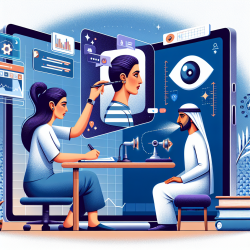Introduction
In the realm of healthcare, the integration of traditional Indigenous approaches into modern medical practices is gaining momentum. A recent scoping review titled Walking in two worlds with type 2 diabetes: a scoping review of prevention and management practices incorporating traditional indigenous approaches sheds light on how these practices can be pivotal in managing type 2 diabetes, particularly among Indigenous youth. As practitioners in speech-language pathology, understanding and integrating these approaches can significantly enhance the outcomes of therapy, especially for children.
The Power of Traditional Indigenous Approaches
The scoping review highlights the unique challenges faced by Indigenous communities in managing type 2 diabetes. Traditional Indigenous practices, such as storytelling, traditional food programs, and community gardening, have shown promise in creating culturally relevant interventions. These practices are not only about managing diabetes but also about fostering a sense of community, spiritual well-being, and cultural identity.
For speech-language pathologists, these findings underscore the importance of cultural relevance in therapy. By incorporating elements of storytelling and community engagement, practitioners can create a more holistic and effective therapeutic environment for children.
Implementing Indigenous Practices in Therapy
Here are some actionable steps practitioners can take to incorporate traditional Indigenous approaches into their therapy sessions:
- Storytelling: Utilize storytelling as a therapeutic tool to enhance language skills and cultural understanding. Encourage children to share stories from their heritage or create new ones that reflect their experiences.
- Community Engagement: Involve community members, such as Elders, in therapy sessions to provide cultural insights and support. This can help children feel more connected to their cultural roots.
- Traditional Foods: Discuss the role of traditional foods in maintaining health and well-being. This can be a part of language and cognitive development activities.
Encouraging Further Research
While the scoping review provides a comprehensive overview of existing practices, there is a need for further research to explore the integration of these practices in speech-language pathology. Practitioners are encouraged to collaborate with Indigenous communities to co-create culturally relevant therapy programs. This collaboration can lead to the development of innovative approaches that address the unique needs of Indigenous children.
Conclusion
Integrating traditional Indigenous approaches into therapy not only enhances cultural relevance but also improves therapeutic outcomes for children. As practitioners, embracing these practices can lead to more holistic and effective therapy sessions. To delve deeper into the research and explore the original paper, please follow this link: Walking in two worlds with type 2 diabetes: a scoping review of prevention and management practices incorporating traditional indigenous approaches.










